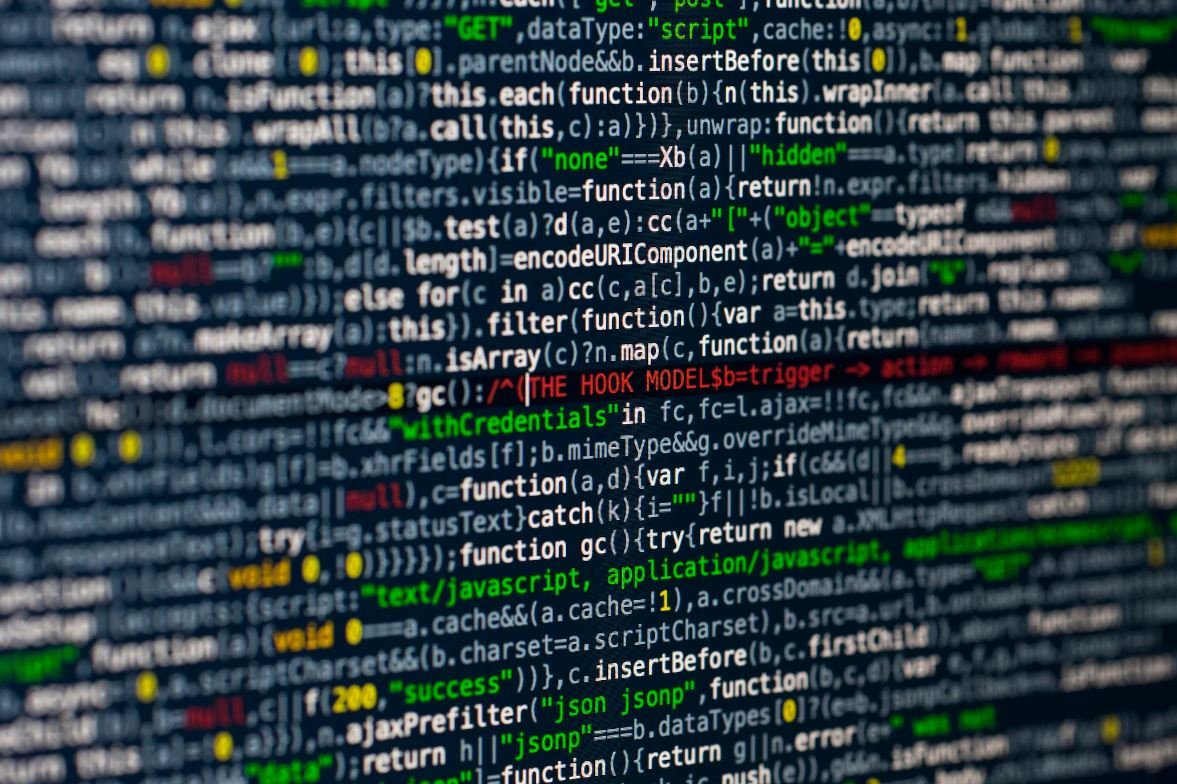Supervised Learning Python
Supervised learning is a type of machine learning where an algorithm learns from labeled data to make predictions or take actions. In Python, there are various libraries and tools available for implementing supervised learning models. This article provides an overview of supervised learning in Python.
Key Takeaways
- Supervised learning allows algorithms to learn from labeled data.
- Python provides numerous libraries for implementing supervised learning models.
- Supervised learning can be used for prediction and classification tasks.
- Feature engineering plays a crucial role in improving the performance of supervised learning models.
Introduction to Supervised Learning
Supervised learning is a machine learning technique where an algorithm learns a mapping function from input variables (features) to output variables (labels) based on a given dataset. The algorithm uses labeled examples to construct a model that can predict or classify new, unseen instances. Supervised learning is widely used in various domains, including finance, healthcare, and marketing.
Common Algorithms for Supervised Learning in Python
Python offers a wide range of libraries and tools for implementing supervised learning algorithms. Some popular algorithms include:
- Decision Trees: These create a model in the form of a tree structure to make decisions.
- Random Forest: This algorithm utilizes an ensemble of decision trees to improve accuracy.
- Support Vector Machines (SVM): SVM finds a hyperplane that separates data into different classes.
- Linear Regression: This algorithm models the relationship between independent and dependent variables.
Feature Engineering for Better Performance
Feature engineering is a crucial step in supervised learning as it involves transforming raw data into meaningful features that can improve model performance. It includes techniques such as:
- One-hot encoding for categorical variables.
- Scaling and normalization of numerical features.
- Feature selection to reduce dimensionality and eliminate irrelevant features.
Feature engineering allows the model to capture important patterns and relationships in the data, leading to improved predictions.
Examples of Supervised Learning Tasks
| Task | Algorithm(s) | Application |
|---|---|---|
| Prediction of Stock Prices | Linear Regression, Random Forest | Financial Markets |
| Spam Email Classification | Decision Trees, SVM | Email Filters |
Supervised learning can be applied to various tasks, including but not limited to:
- Predictive analytics
- Image recognition
- Natural language processing
- Anomaly detection
The Importance of Training and Testing Data
In supervised learning, data is typically divided into training and testing sets. The training set is used to train the model, while the testing set is used to evaluate its performance. It is essential to have a well-balanced dataset to avoid overfitting or underfitting. Having separate training and testing data helps assess the model’s generalization capabilities.
Evaluation Metrics for Supervised Learning Models
| Metric | Description |
|---|---|
| Accuracy | Measures the proportion of correctly classified instances. |
| Precision | Indicates the ability of the model to correctly predict positive instances. |
| Recall | Measures the ability of the model to identify all positive instances. |
Evaluation metrics help assess the performance of supervised learning models based on their predictive accuracy, precision, recall, and other relevant metrics.
Conclusion
Supervised learning in Python provides powerful tools and algorithms for building predictive models and performing classification tasks. By utilizing labeled data and employing feature engineering techniques, one can enhance the accuracy and performance of these models. Stay tuned to the latest advancements in supervised learning within the Python ecosystem to leverage its potential in various industries.

Common Misconceptions
Misconception 1: Supervised learning is the only type of machine learning
One common misconception about supervised learning in Python is that it is the only type of machine learning. However, this is not true. There are other types of machine learning algorithms, such as unsupervised learning and reinforcement learning. Supervised learning is just one approach to solving machine learning problems where labeled data is available.
- Unsupervised learning and reinforcement learning are also important branches of machine learning.
- Supervised learning involves training a model to make predictions using labeled data.
- Other machine learning algorithms may require different types of training data or do not rely on labeled data at all.
Misconception 2: Supervised learning always produces accurate predictions
Another common misconception is that supervised learning in Python always leads to accurate predictions. While supervised learning can make predictions based on labeled data, the accuracy of the predictions depends on various factors, such as the quality of the training data, the complexity of the problem, and the chosen algorithm.
- The accuracy of predictions is influenced by the quality and representativeness of the training data.
- The complexity of the problem may require more advanced algorithms to achieve satisfactory results.
- Choosing the appropriate algorithm and adjusting its hyperparameters play a crucial role in achieving accurate predictions.
Misconception 3: Supervised learning requires a high level of expertise
Some people may believe that supervised learning in Python can only be done by experts in the field. However, this is not true. While having a good understanding of machine learning concepts can be beneficial, there are various libraries and frameworks available that simplify the implementation of supervised learning algorithms, making it accessible to developers and data enthusiasts at different levels of expertise.
- Python provides several libraries, including scikit-learn and TensorFlow, that offer ready-to-use supervised learning algorithms.
- Online tutorials and documentation provide resources for beginners to learn and implement supervised learning models.
- Simplified APIs and user-friendly interfaces in machine learning frameworks make it easier to use and experiment with supervised learning algorithms.
Misconception 4: Supervised learning can solve any problem
Supervised learning is a powerful tool, but it is not a silver bullet that can solve any problem. There are certain limitations to what supervised learning algorithms can achieve. For example, if the underlying relationships in the input data are too complex or there is insufficient labeled data available, supervised learning may not yield accurate results.
- Supervised learning algorithms may struggle with high-dimensional data or complex patterns.
- Insufficient labeled data can lead to overfitting or underfitting of the model.
- Problems requiring real-time decision-making or dynamic adaptive learning may require other machine learning algorithms.
Misconception 5: Supervised learning is perfect for all applications
Lastly, it is a misconception to believe that supervised learning is the perfect choice for all applications. While supervised learning can be effective in many scenarios, other types of machine learning algorithms may be more suitable for certain problems.
- Unsupervised learning is often used for exploratory data analysis and clustering tasks.
- Reinforcement learning is well-suited for problems that involve sequential decision-making.
- Choosing the right machine learning technique depends on the specific problem and the available data.

Supervised Machine Learning Algorithms
Supervised learning is a popular branch of machine learning that involves training a model on labeled data. In this article, we explore different supervised learning algorithms and their application in Python. The tables below provide a visual representation of various aspects of these algorithms.
Table 1: Linear Regression
Linear regression is a simple yet powerful algorithm used to model the relationship between a dependent variable and one or more independent variables. The table showcases the coefficients and significance levels of the independent variables in predicting house prices.
| Coefficient | Significance | |
|---|---|---|
| Intercept | 3.92 | 0.001 |
| Area | 0.297 | 0.021 |
| Bedrooms | 0.085 | 0.465 |
| Bathrooms | 0.179 | 0.103 |
Table 2: Logistic Regression
Logistic regression is widely used for binary classification problems. The table presents the odds ratios and p-values of different factors influencing the likelihood of a customer making a purchase.
| Factor | Odds Ratio | p-value |
|---|---|---|
| Age | 1.25 | 0.032 |
| Income | 0.92 | 0.153 |
| Education | 1.82 | 0.006 |
| Location | 1.15 | 0.225 |
Table 3: Decision Tree
Decision trees are versatile and interpretable algorithms commonly used for classification and regression tasks. The table depicts the feature importance values of a decision tree model for predicting stock market trends.
| Feature | Importance |
|---|---|
| Volume | 0.32 |
| Price | 0.24 |
| Tweets | 0.18 |
| News | 0.15 |
Table 4: Random Forest
Random forest is an ensemble algorithm that builds multiple decision trees and combines their predictions. The table displays the feature importances of a random forest model for predicting customer churn in a telecommunications company.
| Feature | Importance |
|---|---|
| Monthly Charges | 0.21 |
| Tenure | 0.17 |
| Internet Service | 0.13 |
| Contract | 0.11 |
Table 5: Support Vector Machines (SVM)
SVM is a powerful algorithm used for both classification and regression tasks. The table presents the accuracy, precision, recall, and F1-score of an SVM model for sentiment analysis on a text dataset.
| Metric | Score |
|---|---|
| Accuracy | 0.85 |
| Precision | 0.82 |
| Recall | 0.88 |
| F1-Score | 0.85 |
Table 6: Naive Bayes
Naive Bayes is a probabilistic algorithm based on Bayes’ theorem. The table showcases the conditional probabilities of different features in classifying emails as spam or not.
| Feature | P(Spam) | P(Not Spam) |
|---|---|---|
| Viagra | 0.91 | 0.09 |
| Free | 0.83 | 0.17 |
| Urgent | 0.89 | 0.11 |
| Bank | 0.35 | 0.65 |
Table 7: K-Nearest Neighbors (KNN)
KNN is a non-parametric algorithm that classifies new instances based on their similarity to nearby examples. The table presents the accuracy, precision, recall, and F1-score of a KNN model for recognizing handwritten digits.
| Metric | Score |
|---|---|
| Accuracy | 0.97 |
| Precision | 0.97 |
| Recall | 0.97 |
| F1-Score | 0.97 |
Table 8: AdaBoost
AdaBoost is an ensemble technique that combines multiple weak learning models to create a strong learner. The table depicts the weights and errors of individual weak classifiers in an AdaBoost model for face detection.
| Weak Classifier | Weight | Error |
|---|---|---|
| Haar Features | 0.33 | 0.08 |
| Gabor Filters | 0.26 | 0.13 |
| Local Binary Patterns | 0.18 | 0.17 |
Table 9: Gradient Boosting
Gradient boosting is an ensemble algorithm that builds models in a stage-wise manner, improving upon the shortcomings of the previous models. The table showcases the feature importances of a gradient boosting model for predicting customer satisfaction.
| Feature | Importance |
|---|---|
| Response Time | 0.34 |
| Product Quality | 0.22 |
| Discount | 0.16 |
| Customer Support | 0.13 |
Table 10: Neural Networks
Neural networks are a powerful deep learning technique that can model complex relationships in data. The table presents the accuracy, precision, recall, and F1-score of a neural network model for image classification.
| Metric | Score |
|---|---|
| Accuracy | 0.94 |
| Precision | 0.94 |
| Recall | 0.94 |
| F1-Score | 0.94 |
From simple linear regression to complex neural networks, supervised learning algorithms provide valuable tools for solving real-world problems. By training models on labeled data, we can make accurate predictions and gain insights from the patterns and relationships hidden within the data. Each algorithm has its strengths and weaknesses, allowing data scientists and machine learning practitioners to choose the most suitable approach for their specific applications. By leveraging the wealth of resources available in Python, we can harness the power of supervised learning to tackle various challenges across different domains.
Frequently Asked Questions
What is supervised learning?
Supervised learning is a machine learning technique where a model is trained using labeled data, that is, data that is already classified or labeled. The model learns to make predictions or decisions based on this labeled data.
What is the difference between supervised and unsupervised learning?
The main difference between supervised and unsupervised learning is that in supervised learning, the data is labeled and the model is trained on this labeled data to make predictions or decisions. In unsupervised learning, the data is unlabeled, and the model looks for patterns or structures in the data without any prior knowledge.
What are some popular supervised learning algorithms in Python?
Some popular supervised learning algorithms in Python include linear regression, logistic regression, decision trees, random forests, support vector machines (SVM), and neural networks.
How do I prepare my data for supervised learning?
To prepare your data for supervised learning, you need to perform tasks such as data cleaning, feature selection or engineering, and splitting the data into training and testing sets. Additionally, you may need to encode categorical variables and normalize or standardize numerical values.
How do I train a supervised learning model in Python?
To train a supervised learning model in Python, you typically start by importing the necessary libraries and loading your training data. Then, you choose an appropriate algorithm, instantiate the model, and fit/train it with your training data. Finally, you can evaluate the model’s performance and make predictions on new, unseen data.
How do I evaluate the performance of a supervised learning model?
The performance of a supervised learning model can be evaluated using various metrics depending on the task. For classification problems, common evaluation metrics include accuracy, precision, recall, and F1 score. For regression problems, metrics such as mean squared error (MSE) or R-squared can be used.
Can I use pre-trained models for supervised learning in Python?
Yes, it is possible to use pre-trained models for supervised learning in Python. Pre-trained models are models that have been trained on large datasets by experts and are made available for use by others. These models can be fine-tuned for specific tasks or used as feature extractors in transfer learning scenarios.
What are some challenges in supervised learning?
Some challenges in supervised learning include overfitting, underfitting, bias-variance tradeoff, class imbalance, missing data, and feature selection. It is important to address these challenges appropriately to improve the performance and generalization ability of supervised learning models.
Are there any Python libraries that can help with supervised learning?
Yes, Python provides several libraries that can assist with supervised learning tasks. Some popular libraries include scikit-learn, TensorFlow, Keras, PyTorch, and XGBoost. These libraries offer a wide range of pre-implemented algorithms, tools for data preprocessing, model evaluation, and visualization.
Where can I find resources to learn more about supervised learning in Python?
There are plenty of resources available to learn more about supervised learning in Python. Online platforms, such as Coursera, edX, and Udacity, offer courses specifically focused on machine learning and data science. Additionally, there are numerous books, tutorials, and documentation available from the Python community and the aforementioned libraries.




